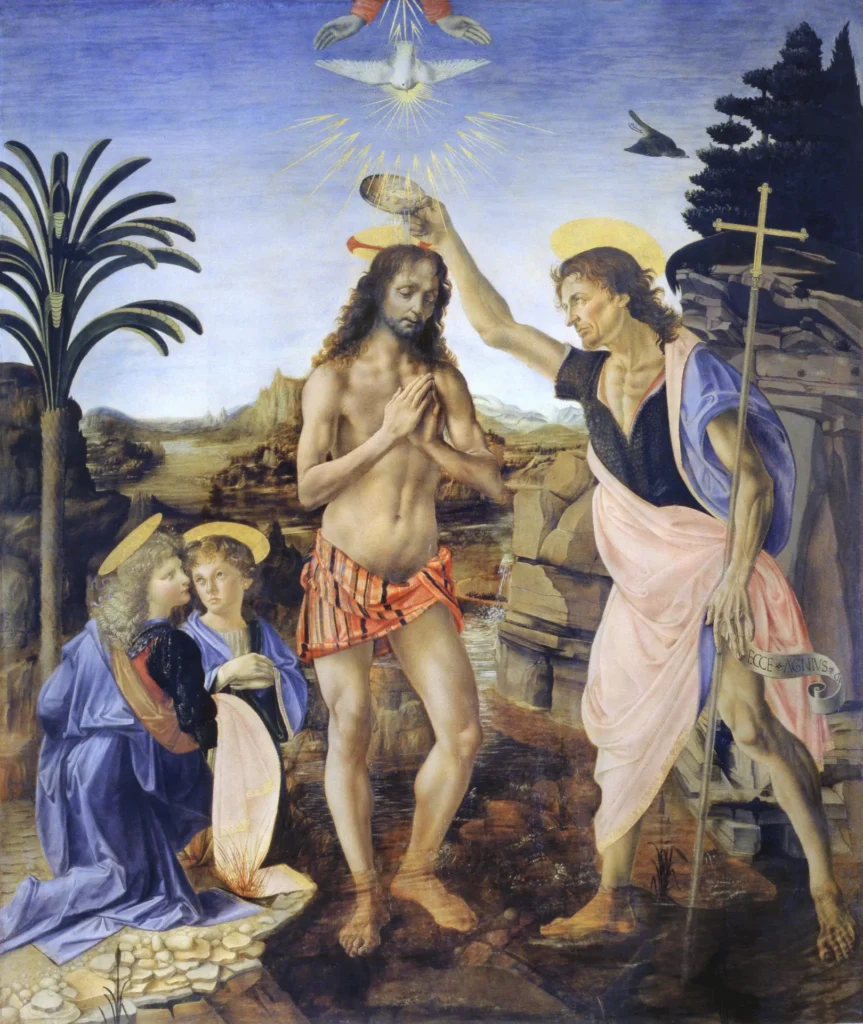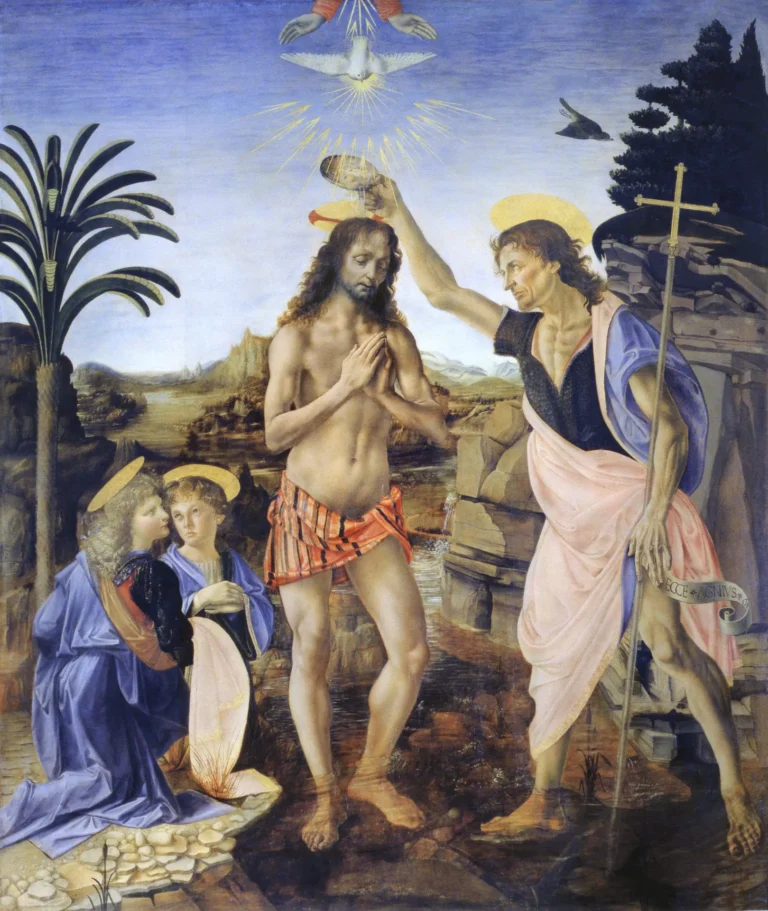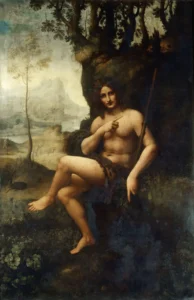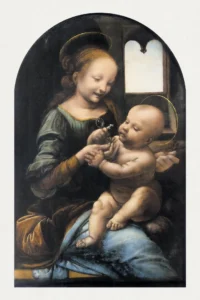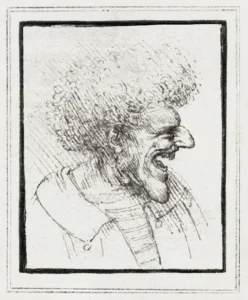Baptism of Christ (1470-1480)
Baptism of Christ is a mesmerizing painting that captures the spiritual moment of Jesus' baptism by St. John the Baptist, surrounded by various symbolic elements that enhance its religious significance. Painted between 1470 and 1475 under the guidance of Andrea del Verrocchio, with essential contributions from young Leonardo da Vinci, this work merges traditional methods with emerging Renaissance realism. The combination of oil and tempera on wood showcases an innovative approach for its time, setting the stage for future artistic developments. Presently displayed in the Uffizi Gallery, its captivating nature keeps it an enduring favorite among art lovers.
1470 - 1475
About the Artwork
The story behind Baptism of Christ reflects a pivotal moment in art history, shaped by collaboration and advancements in technique. Commissioned for the monastery of San Salvi near Florence, this painting stands as a testament to the powerful artistic environment of the Renaissance. While Verrocchio's expertise established the foundation, the young Leonardo, only 18 years old, infused the work with unprecedented realism and emotional depth, particularly evident in the angel he painted. This symbiotic relationship not only showcases the talents of each artist but also illustrates the period's emphasis on teamwork within workshops. Today, the painting's journey—from a monastery to the Uffizi Gallery—mirrors the evolution of art itself, making it a significant landmark in the narrative of Western art.
Did You Know
Liked what you see? Add it to your collection.
Enjoyed reading? Share it.
... continued
Creation and Collaborators
The painting was produced between 1470 and 1475. It was a collaborative effort, with Verrocchio initiating the work and setting up the composition. Verrocchio painted the main figures, Jesus and St. John the Baptist. Another apprentice, whose identity is not certain but possibly Sandro Botticelli, worked on details such as the palm on the left, the rocks on the right, and the right angel.
Leonardo da Vinci's Contribution
Leonardo da Vinci, who was about 18 years old at the time and an apprentice in Verrocchio's workshop, played a crucial role in completing the painting. He painted the landscape in the background, the angel on the left, and standardized the styles of the different artists involved to create a cohesive work. Leonardo's angel is particularly noted for its realism and delicate handling of details, showcasing his early mastery.
Technique and Materials
The painting is executed in oil and tempera on a wooden panel, measuring 177 x 151 cm. This combination of media was innovative for the time, with Leonardo using oil to paint his sections.
Subject Matter
The painting depicts the baptism of Jesus Christ by St. John the Baptist, set on the banks of the Jordan River. The scene includes two angels attending the event, with the Holy Spirit descending in the form of a dove. The figures are accompanied by symbolic elements such as halos and a cross held by St. John the Baptist.
Provenance
The painting was originally commissioned by the monastery of San Salvi near Florence. It later moved to another Vallombrosan monastery, Santa Verdiana, before joining the Florentine Galleries in 1810. Since 1919, it has been housed in the Uffizi Gallery in Florence.
Historical Significance
This work is significant not only because it is one of the earliest known paintings by Leonardo da Vinci but also because it highlights the collaborative nature of artistic workshops during the Renaissance. The painting demonstrates the transition from the traditional methods of Verrocchio to the innovative techniques and realism that would become hallmarks of Leonardo's style.




